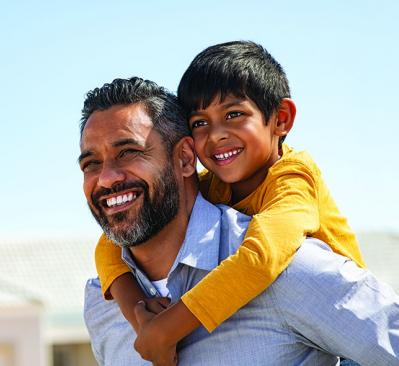
“An officer said to me, ‘She must be a really big woman, and stronger than you.’ Society doesn't believe men like me that go through things like these.” – Male Survivor
Developing services that meet the needs of all survivors of domestic violence (DV) requires that we center safety and all the voices of those that experience harm. Historically, domestic violence programs were born from the women’s liberation movement of the 1970’s to address the needs of female survivors. Overtime, it has come to be understood that anyone can be a victim of domestic violence regardless of race, ethnicity, class, sexual orientation, or gender identity. Currently, most domestic violence programs primarily provide services to women and children, who continue to represent the majority of victims seeking these services. At the same time, these programs struggle with the idea of integrating services to address male-identified victims across the lifespan. Both research and practice underscore the need to improve services to this group.
While data shows that domestic violence disproportionately affects girls and women, boys, gay, bisexual, transmasculine and heterosexual men are also victims. In 2015, NRCDV conducted a series of listening sessions with male survivors; out of these conversations, we noted that one of the most significant barriers to accessing services was shame and stigma, including the pressure they felt as men to be strong and “keep everything together.” Male victims often fear that their complaints are not credible or that they will be blamed for the abuse if they tell anyone. Some re-counted that receiving non-residential services from a domestic violence (DV) program was not an option because of their gender.
“I felt judged and not believed. You know men should be able to take care of their woman type of mentality.” – Male Survivor
We have a long way to go to deepen our understanding of the specific challenges male victims continue to face. Society needs a broader concept of “male identity” to ensure accessibility to services and the promising practices developed by agencies serving them. Given this absence of information, it is especially critical to amplify the voices of male victims from historically marginalized communities, as well as the experiences and best practices of the advocates who work with them.
“It’s hard…people don't believe you. I told one doctor my partner was beating me up and he immediately thought that I was gay. Society can’t believe that a woman can abuse a man.” – Male Survivor
About this collection:
This collection offers available resources for domestic violence service providers to enhance responses to male-identified survivors of domestic violence within their current service delivery models and within specialized community-driven programming and services.
NRCDV has compiled resources that may offer helpful guidance for domestic violence programs that need to enhance their response to male-identified victims. See our related TA Guidance document, Serving Male-Identified Survivors of Intimate Partner Violence.
A note about language:
Throughout this collection, we will be using the following terms interchangeably domestic violence (DV), intimate partner abuse (IPA), and intimate partner violence (IPV) to describe physical violence, sexual violence, stalking, or psychological harm by a current or former partner or spouse.









